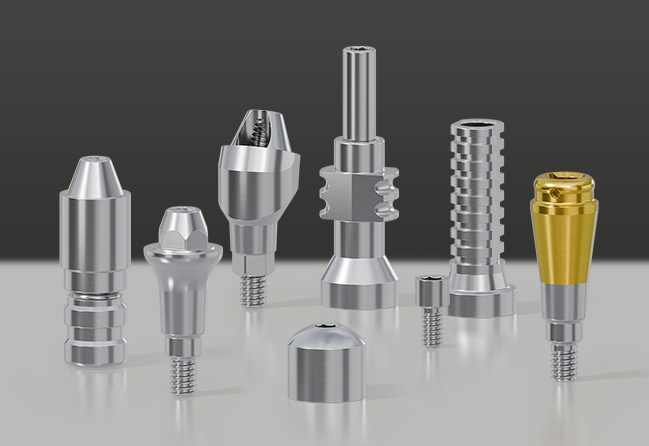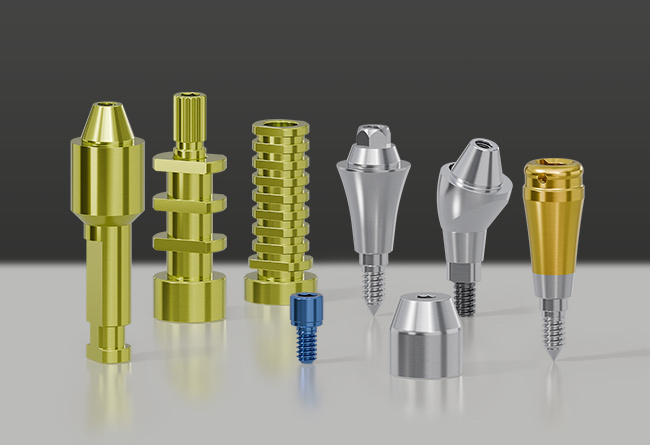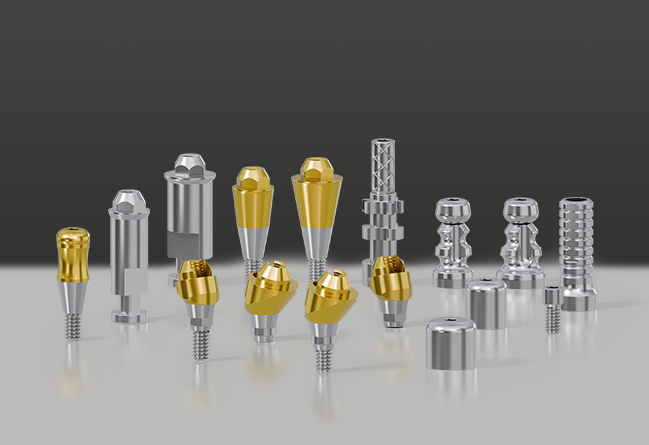What is an healing cap implant and what is its role in dental implant surgery?
Healing Cap Implant is a small surgical device that is usually installed on the implant after dental implant surgery. Its main functions include:
Protect the implant: The healing cap can protect the soft tissue around the implant, prevent infection and external stimulation, and promote healing.
Promote soft tissue healing: The design of the healing cap helps to form a proper healing margin, ensuring healthy growth of soft tissue and integration with the implant.
Maintain implant position: The healing cap helps maintain implant stability and prevents displacement during the healing period.
Provide a foundation for subsequent restoration: The healing cap provides a stable foundation for subsequent restorations (such as crowns), ensuring the fit and functionality of the restorations.

What are the types of healing cap implant? What are the specific uses and characteristics of each healing cap?
The types of healing cap implant mainly include the following:
-
Standard Healing Cap: Used in most routine implant surgeries, with a simple design that fits most patients.
-
Personalized Healing Cap: Customized to the patient’s specific anatomy, providing better fit and aesthetics for complex cases.
-
Angled Healing Cap: Used in situations where the angle of the restoration needs to be adjusted, it can help solve the angle mismatch between the implant and the restoration.
-
Temporary Healing Caps: are used as temporary restorations, usually during the healing period of an implant, allowing the patient to maintain function and aesthetics during the healing period.

What materials are healing cap implant typically made of? How do these materials affect the healing process and integration of the implant?
Implant healing caps are usually made of the following materials:
-
Titanium alloy: Due to its excellent biocompatibility and strength, titanium alloy is the most commonly used healing cap material. It can integrate well with bone tissue and promote healing.
-
Polymer: Some healing caps may use biocompatible polymers, which are lightweight and easy to process, making them suitable for temporary applications.
-
Ceramic Materials: In some cases, ceramic materials can also be used for healing caps due to their excellent biocompatibility and aesthetic properties.
Influence of materials on the healing process and implant integration:
- Biocompatibility: Materials with high biocompatibility can reduce rejection reactions and promote healing of surrounding tissues.
- Strength and stability: The strength of the material affects the stability of the healing cap during the healing period, ensuring that the implant is not affected by external forces.
- Antibacterial Properties: Certain materials may have antibacterial properties, further reducing the risk of infection.

How to choose a suitable healing cap implant? What factors should dentists consider when choosing a healing cap?
When selecting an appropriate implant healing cap, the dentist should consider the following factors:
PATIENT’S ANATOMY: The choice of healing cap should be tailored to the patient’s oral anatomy to ensure the best fit.
Implant type: Different types of implants may require healing caps of different designs and the dentist should ensure that the healing cap is compatible with the implant.
Healing period requirements: Choose the appropriate type of healing cap based on the patient’s healing ability and expected healing time.
Design of subsequent restoration: The choice of healing cap should also match the design of the subsequent restoration to ensure functionality and aesthetics.
What is the installation process of the healing cap implant? What should patients pay attention to after the operation?
Installation process:
Preoperative Evaluation: Before fitting the healing cap, your dentist will perform a comprehensive oral examination and radiographic evaluation to determine the fit and position of the healing cap.
Anesthesia: Before the procedure begins, the dentist will use local anesthesia to ensure that the patient does not feel pain during the procedure.
Fitting of the healing cap: Your dentist will fit the healing cap over the implant, ensuring it fits snugly and remains stable.
Sutures: In some cases, your dentist may suture the soft tissue around the healing cap to promote healing.
Postoperative precautions:
Maintain oral hygiene: Patients should maintain good oral hygiene to avoid infection. Use a mild mouthwash and a soft-bristled toothbrush to clean the mouth.
Avoid strenuous exercise: During the healing period, patients should avoid strenuous exercise and heavy physical labor to avoid putting pressure on the healing cap.
Regular Follow-up: Patients should follow up with their dentist regularly to monitor the progress of healing.
Media Contact
Company Name: Zhejiang Trusyou Medical Instruments Co., Ltd.
Email: Send Email
Phone: +86 15158460117
Country: China
Website: https://www.trusyou.com/
